I garden a bit differently than most. Most of my garden is in pots. I do this primarily to conserve water. It also allows for easy weeding, plant isolation, and soil experimentation. Gardening in pots allows me to garden under trees. In my area, willow shade will reduce the brunt of summer quite well, making the garden enjoyable instead of unbearable.
The big expense gardening this way is potting soil. Not so bad really, the single month, summer water bill for conventional gardening vs gardening they way I am doing it, will easily pay for a years potting soil.
When I set up a garden pot, I try to use 3 gallon or larger pots. I stuff the bottom third with leaves to keep the soil from draining out with the water. Then I add my planting mix.
Here is enough soil to fill 20 3 gallon pots.
My mix Starts with spent mushroom dirt. For some plants, it end with that. My Celery loves mushroom dirt straight up. Daikon radishes will do fine in it as long as I supplement the potassium levels just a bit.
As a disclaimer, when you get a truck load of mushroom dirt, you often get a very rich smell. You can also get a bunch of flies for a while. This is a price I am willing to pay.
For potassium, I use Green Sand. This is 1% slow release. This maintains a decent level of potassium in the pots. This helps the roots develop, and makes the veggies better sources of potassium. In potting soil, potassium is usually the first thing to wash out. So a long term addition is a good thing.
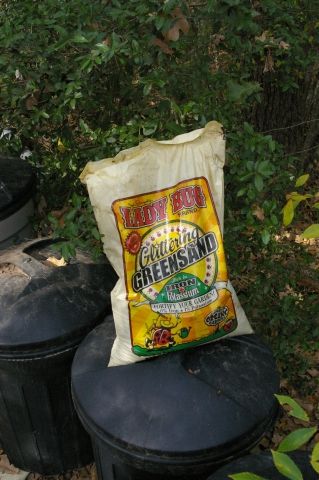
Also quick to wash out of a pot, is calcium. Not having enough calcium will give brown spots at the bottom of tomatoes, blossom end rot, and will produce vegetables with less calcium. So for healthy plants and healthy people who eat the plants, a good calcium supply is needed. I try to incorporate some crushed limestone chicken grit. As you can see in the photo, I am almost out. This is nice slow release calcium. Not as slow as you might think however, it is often quite gone after two years.
For a quick hit of calcium or a dressing for plants, or to balance a low PH, I will used crushed agricultural limestone. The strainer is for spreading it on the surface of beds, and sprinkling on leaves. Some plants will absorb it from the leaves, and some insects, not as many as I would like, find it repellent.
A lot of plants will do fine in fine soil, but a lot of plants do better if they have a courser soil or more air space in the soil. This can be a problem, since the soil can dry out easily. Two common additions to soil can help give air space while retaining moist soil. Vermiculite and Pearlite.
Vermiculite
Pearlite
Pearlite is volcanic glass that has been heated under pressure. The sudden release of pressure makes it puff up like popcorn. This is fairly inexpensive if you buy it in a huge, yet far from heavy bag. It is still one of the larger expenses when you pot a lot. This is great stuff. I suspect the silica provided help some plants to be healthier and thus help us be healthier when living on them. I prefer to avoid it when growing root vegetables, as some can get included in the root and give a bit of a gritty feel to some root vegetables.
Vermiculite is a touch more expensive and not quite as light. It does not provide quite as good an air channel structure as pearlite, but it helps with moisture and nutrient retention better. For root vegetables this is a wonderful thing to add. I find I need to add more of it to get a good mix, than when I use pearlite. Vermiculite is Weathered Mica, that has been expanded the same way that pearlite has been expanded.
I always try to save a bit of mushroom dirt for later emergency use. The mound of mushroom dirt becomes a garden plot after it gets reduced to the right height, so by doing this, I don’t have to get as many loads over time.
Peat Moss is also a good addition, It increases the soils ability to breath, and acidifies the soil a bit. This can compensate for the calcium supplement added to the soil. It promotes the growth of healthy root in several ways, and helps give a good texture to the soil.
My standard mix is about 15 parts mushroom dirt, 5 of pearlite, 4 of peat moss, 1 of crushed Limestone, 1 of Limestone Chicken Grit, and 1 of Green Sand. This is usually done by the shovel full and mixed in a wheelbarrow.
I also take a 1/8″ screen and sift a bunch through it. The course soil left is great for growing. The fine stuff I save and uses as a starting mix for young plants I want to treat carefully.
Bob
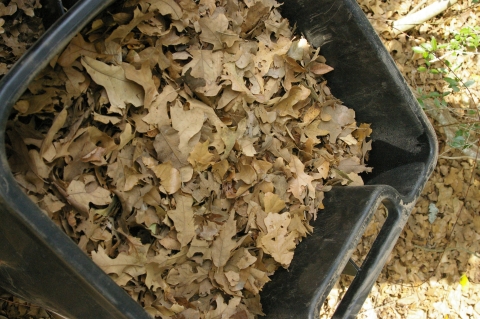
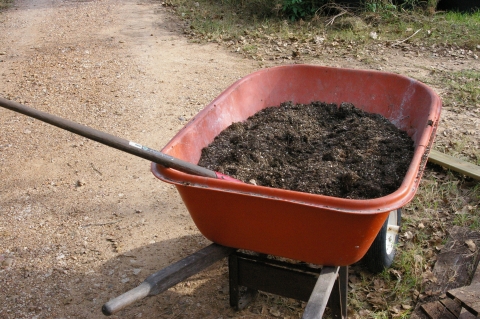


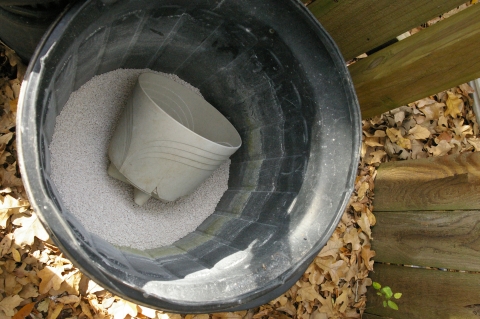
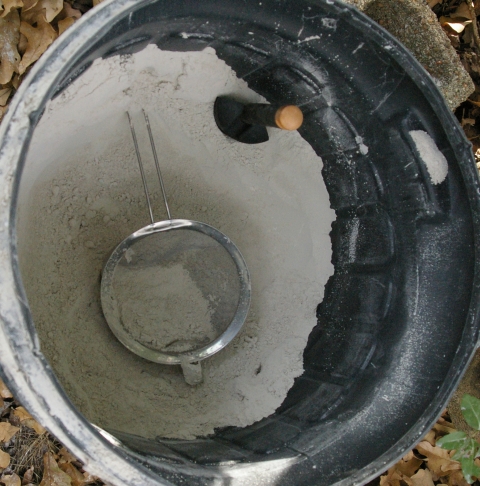

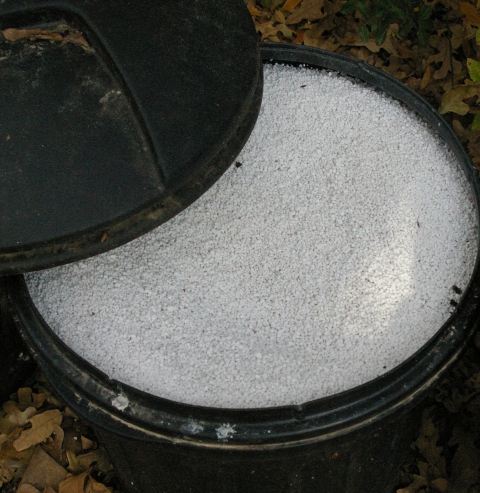
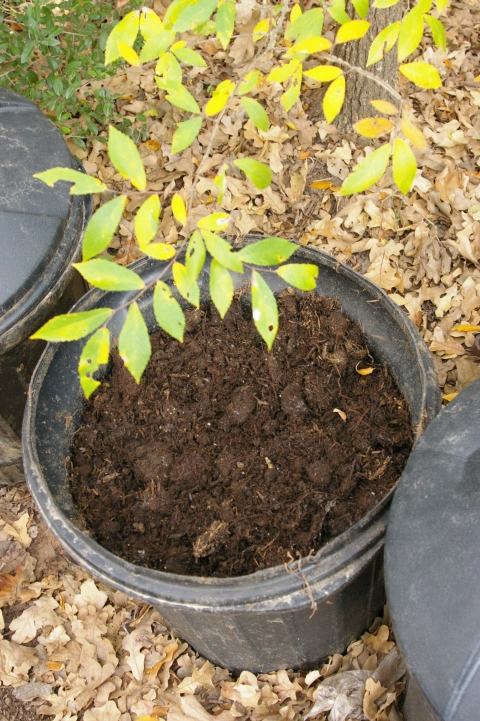
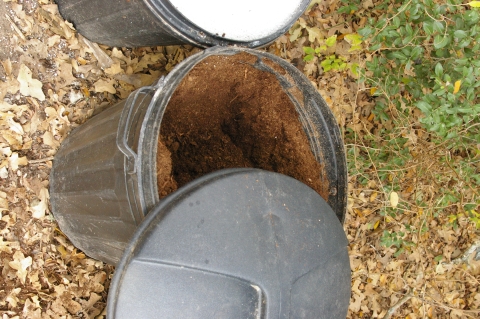
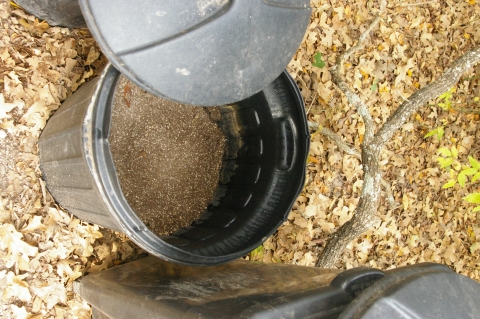
 A page Dedicated to My Writing
A page Dedicated to My Writing
Skip has probably forgotten more about potting soils that I have ever known, so in defense of my methods, before he takes me apart, I do get really good results, and am trying to conserve on cost. I probably need to look for a bulk (inexpensive) source of pine bark to raise a lot of these plants in.
Bob
Oh no Bob, you’re doing just fine! My reply will just tag onto yours as additional information, no conflict at all! I will try to finish it and submit it late today; I just have a lot of other things that must be done today is all…. my compliments on using the leaves… well done!
Skip
Hey Bob,
Do you plant immediately with this mix, or do you need to give the leaves time to decompose?
Thanks,
Charles
Hey, Charles, great to hear from you on the blog!
Since the leaves are really down deep, and slow to decay, in other words not hot, I plant immediately on them. The soil itself I plant based on experience mostly. Tomato and Radish can both take a fairly hot soil, Banana trees, don’t know what hot means. Peas will fail quickly in a hot soil mix.
I am going to try substituting pine bark for vermiculite and pearlite. Lower energy to produce, and a bit more local.
Bob
Bob said:
“… am going to try substituting pine bark for vermiculite and pearlite. Lower energy to produce, and a bit more local. Bob”
Good idea Bob. You will need to crush the bigger ones a bit and sift the fines out in order for it to be a replacement (for) the same effect as drainage grits in a potting mix. The fines will produce the opposite effect as desired. However, it can go into the bottom of a pot as a large grit as-is. Use some screening over the drain hole to keep them out of the hole and plugging the drain.
One big difference of bark with non-rotting grits for drainage: If tempted to pass on repotting for awhile, the bark does rot and then does not provide drainage in the 2nd or 3rd year. In the 3rd year it will be actively plugging the drainage.
Finally, like rotting leaves….. they will supply a little bit of acid pH through tannic acid from watering. Not much though.
And, thanks again for the kind words above; and, the invitation to write a response!
Skip
Hey Bob,
Glad to participate and to read and glean all the garden info.
I built two 4×4 raised garden beds this past week so we can at least do a little veggie gardening this year. Now that we have a house, we can finally get beyond doing all of our gardening in pots.
I did rake up some of the leaves we had and threw them on top of the newspaper that I used to line the bottom.
We’ve started some jiffy pots inside and will transplant them to the beds in late March.
We’ll see how it goes.
– Charles
Because our place is mostly sand it’s been rather tough to have a good garden with so little rain. Well…until this past week. We’ve started experimenting with gardening in pots. One tomato plant is 2 years old and still producing very well. What I would like to know is, where do I find bulk potting mix or the mushroom dirt? In today’s economy buying by the bag is a bit pricey. I’ve contacted the local nurseries but they all buy it by the bag too and haven’t a clue where to get it bulk.
Spent mushroom dirt is produced by mushroom farms. I get mine from Monterey Mushrooms in Madisonville TX. http://www.montereymushrooms.com/ I call them wait a few weeks and then get a huge rich smelling pile dropped off by a dump truck. If you want a smaller load quicker, you can often drive to the mushroom farm and they will dump way more than your truck can handle for a very decent price. Call them first and also ask about mushrooms. When I drive there I buy a few large bags of delightful mushrooms.
Bob
[…] another potting mix example, see gardener Bob Strawn’s Potting Mix article describing the mixes he uses in his container […]